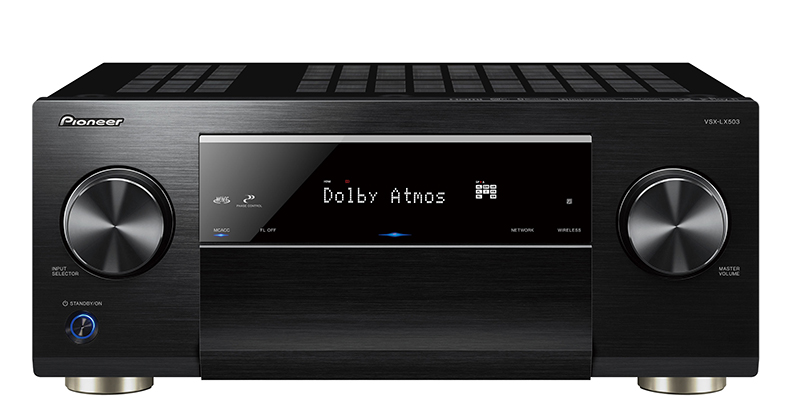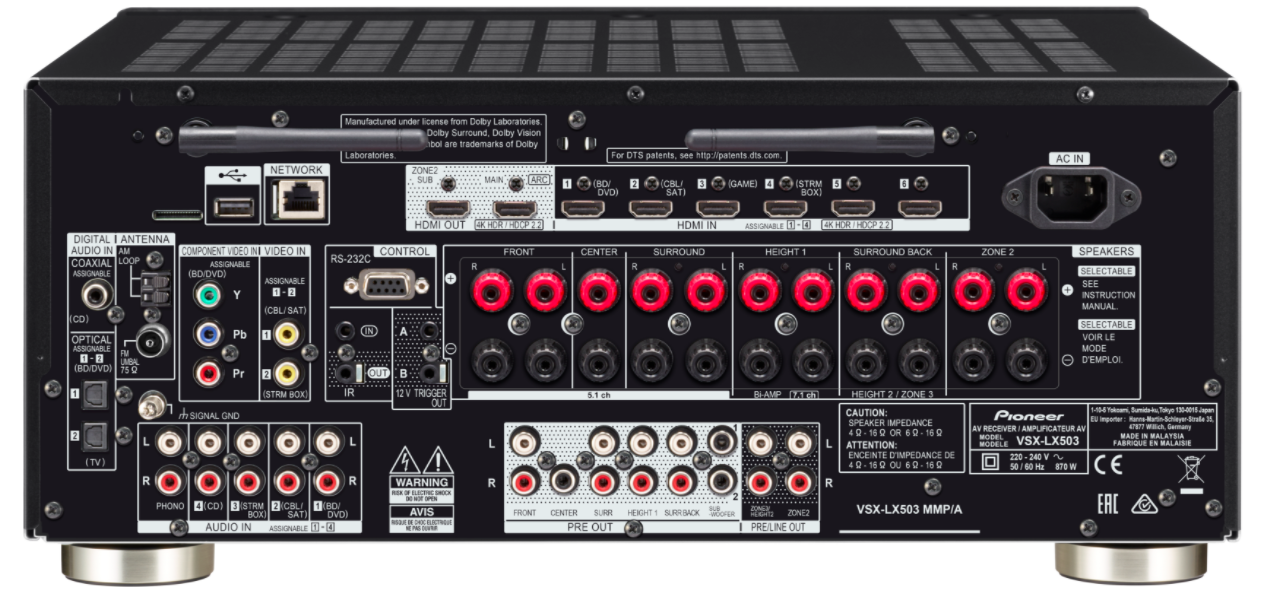Pioneer introduces a pair of 9.2-channel receivers
The VSX-LX503 (above) and VSX-LX303 are both available in black or silver, and both go on sale next month.

Pioneer has announced a pair of heftily specified home cinema receivers - the £999 VSX-LX503 and its £800 sibling, VSX-LX303.

The VSX-LX303 is capable of handling Dolby Atmos and DTS:X soundtracks in 5.2.4 or 7.2.2 configurations. Each channel is driven by 170 watts of power (into 6 ohms).
Connectivity is, as you'd imagine at this sort of money, comprehensive. Each of the six HDMI inputs at the 303's rear are 4K/HDR10/Dolby Vision-compatible - the HDMI on the front fascia is not, but all seven are HDCP2.2-compliant.
There's a couple of USB inputs, a pair of HDMI outputs, two digital optical inputs, a digital coaxial in and a moving magnet phono stage. A pair of component video inputs and a composite input cater for legacy equipment.
Chromecast built-in is on board, and DTS Play-Fi makes streaming of audio content to the 303 straightforward. Bluetooth connectivity is integrated too, and the Pioneer's high-res AKM DAC means digital audio files up to 32bit/384kHz can be dealt with.
Spotify, Deezer, Tidal, Amazon Music and TuneIn internet radio are all accessible via the remote control or Pioneer Music Control app. AM and FM radio is on board too.
Predictably, the VSX-LX503 is the same, but more so. Power is upped to 180 watts per channel, there are speaker pre-outs (11 channels) for power-amp enthusiasts, and hi-res audio capability extends to Direct DSD 11.2. There's Apple AirPlay certification too.
Get the What Hi-Fi? Newsletter
The latest hi-fi, home cinema and tech news, reviews, buying advice and deals, direct to your inbox.
MORE:
The new What Hi-Fi? podcast is available now!
YouTube Music: Google's new, free Spotify rival
Simon Lucas is a freelance technology journalist and consultant, with particular emphasis on the audio/video aspects of home entertainment. Before embracing the carefree life of the freelancer, he was editor of What Hi-Fi? – since then, he's written for titles such as GQ, Metro, The Guardian and Stuff, among many others.
